(Cross-posted from WildLabs)
In February 2017, a tiger killed two people within a span of 3 days near the Pilibhit Tiger Reserve in Indian province of Western Uttar Pradesh, and was declared a man-eater. With state elections around the corner, and local villagers threatening to boycott the polls unless the tiger was removed from the area, the Uttar Pradesh Forest Department (UPFD) began an operation with the objective of capturing or killing the tiger. They also called in a drone team to be a part of the operation, primarily to have a highly visible way of broadcasting to the local communities that something was being done to catch the tiger.
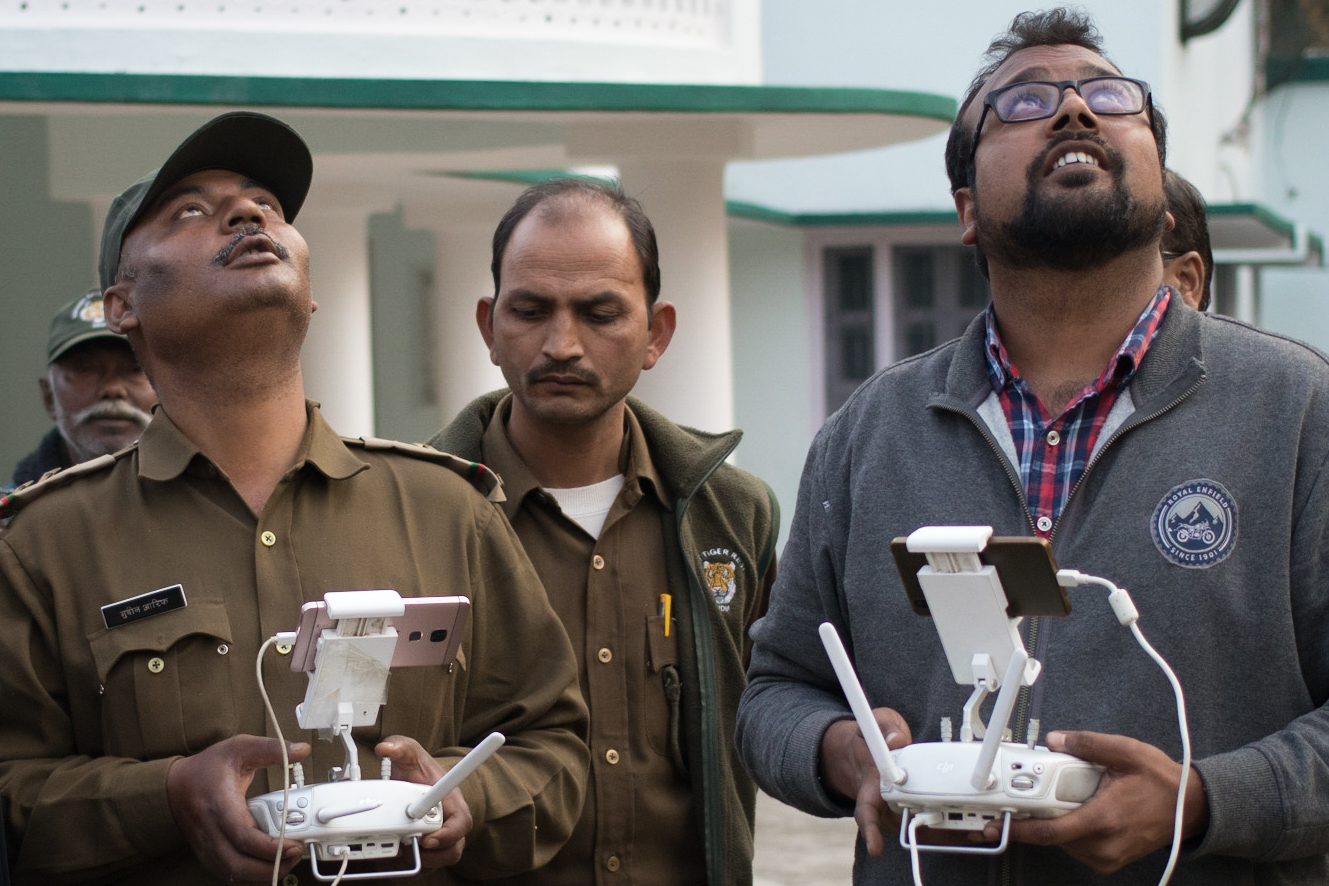
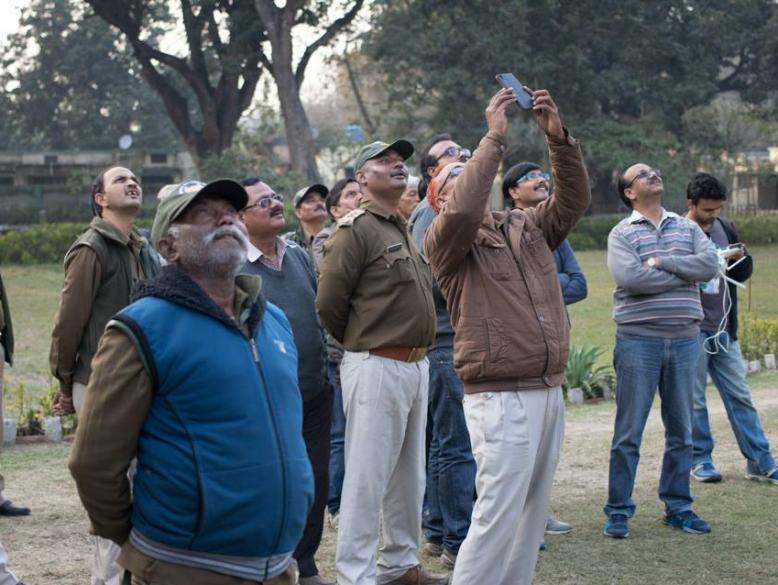

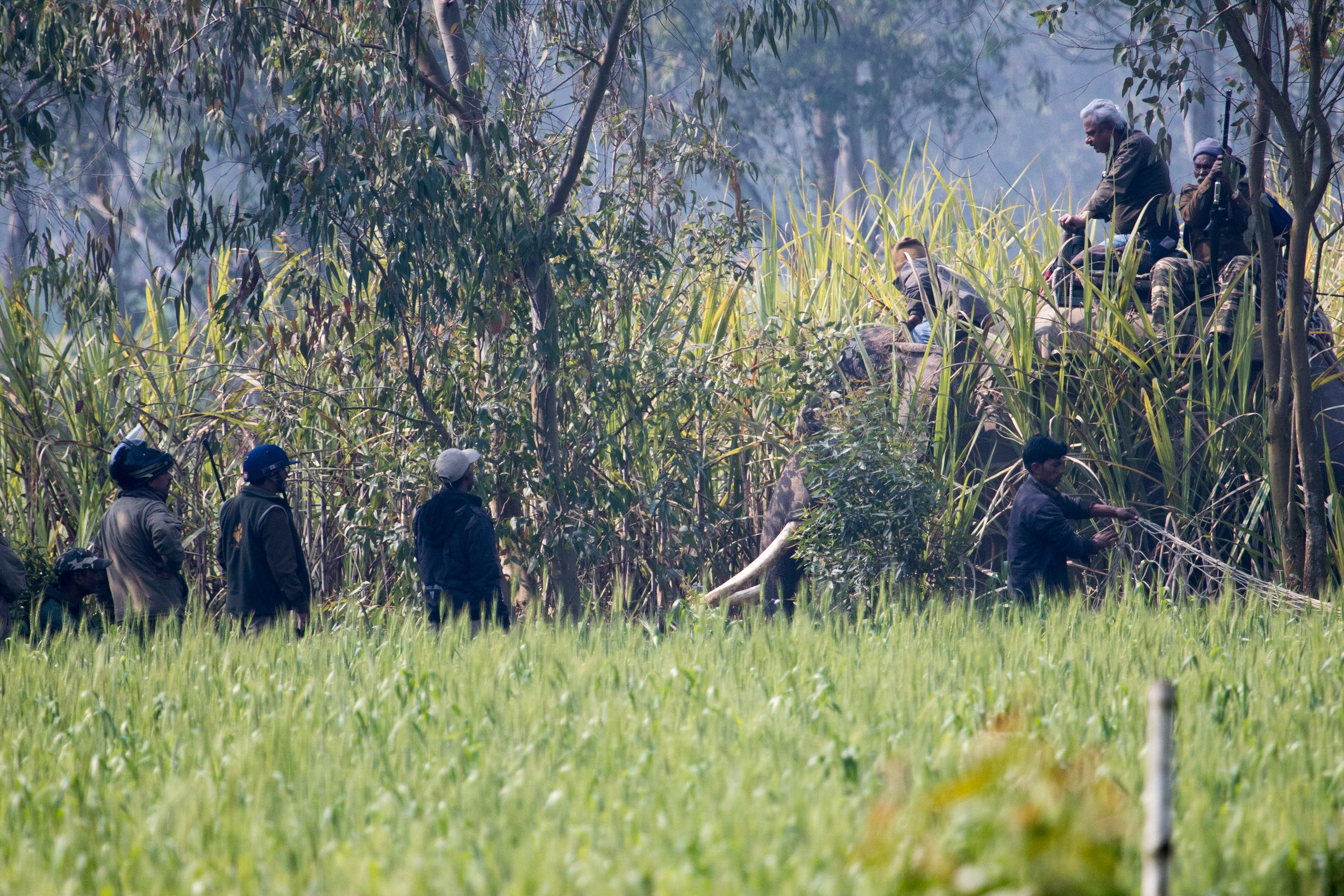
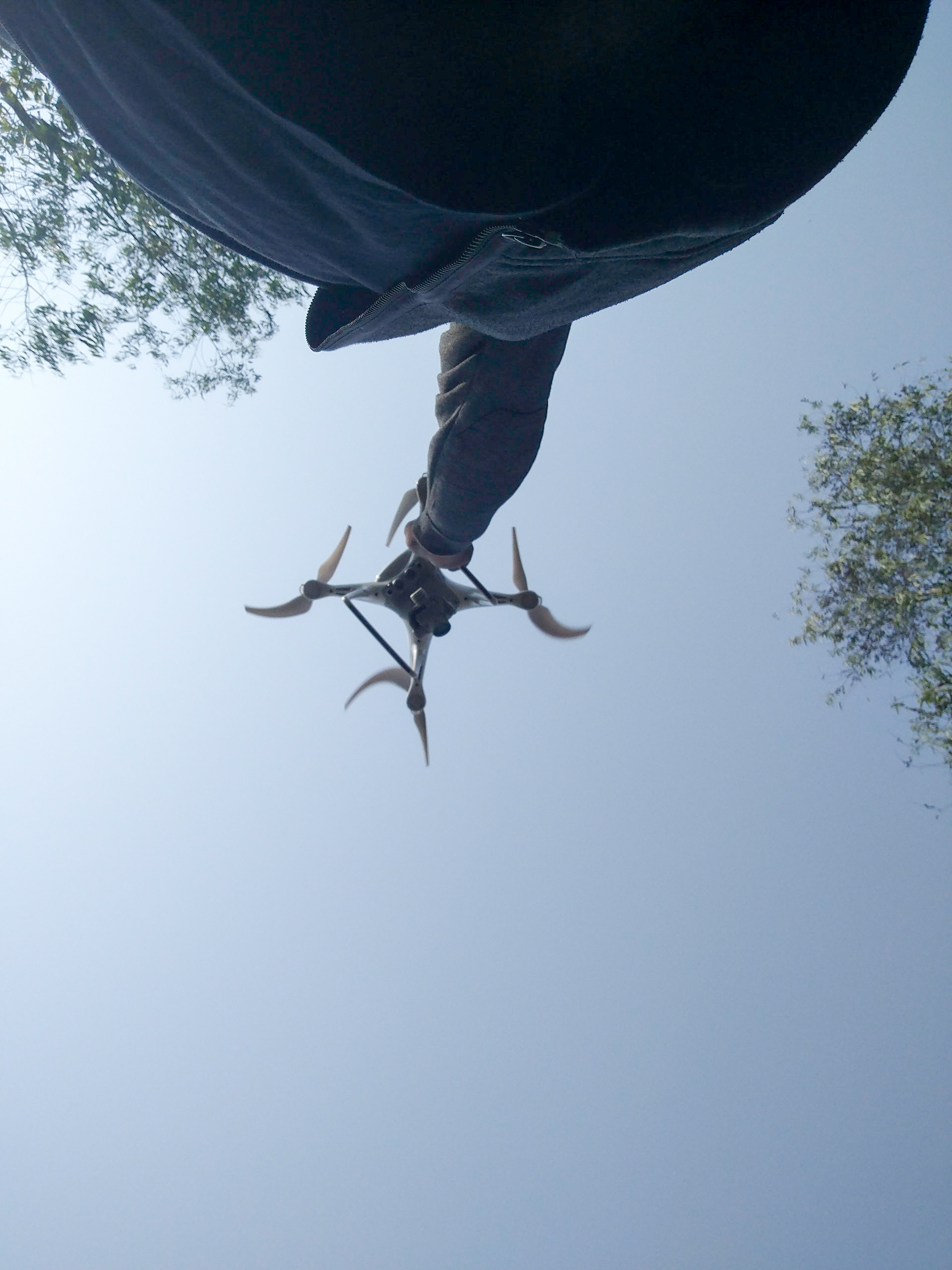
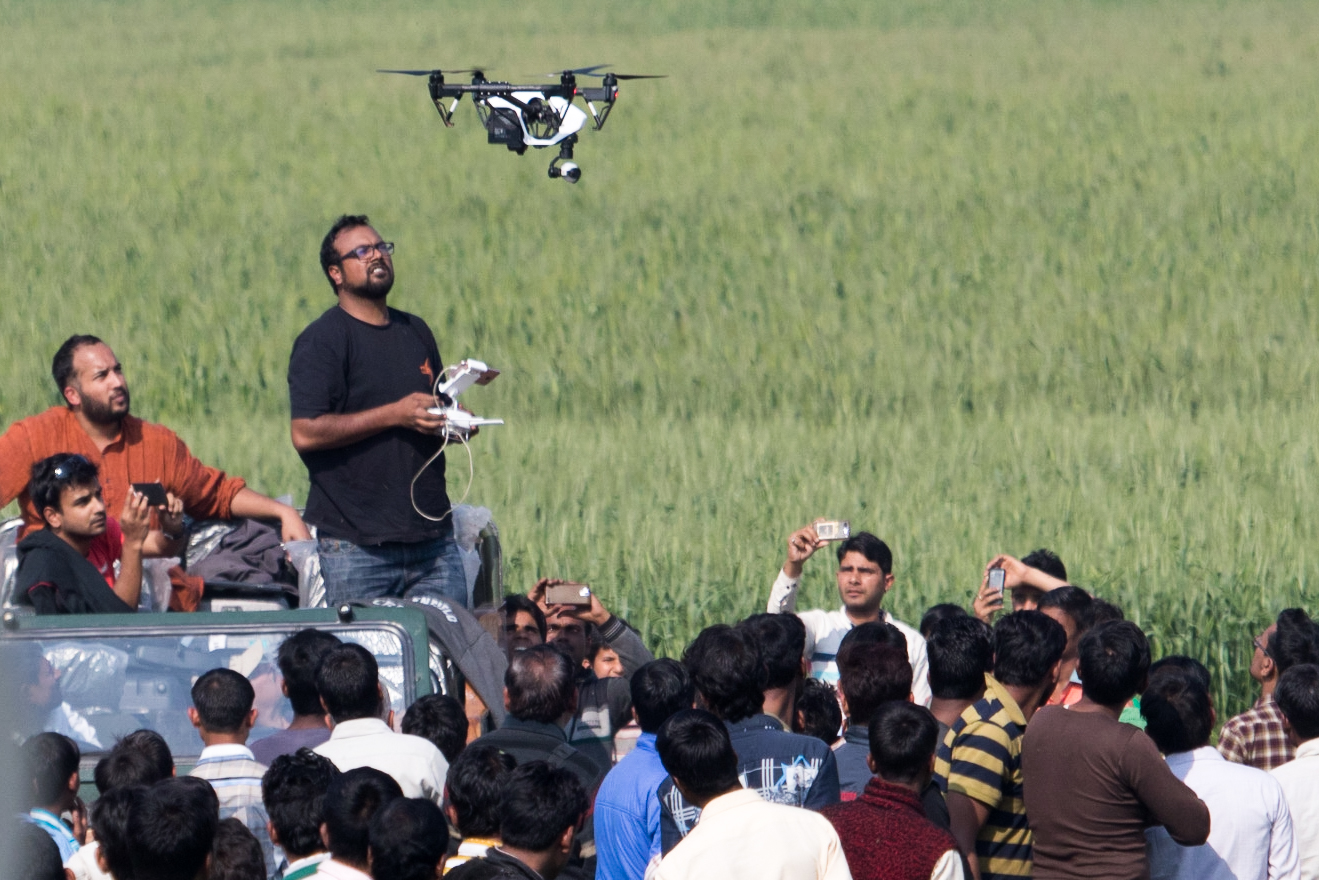
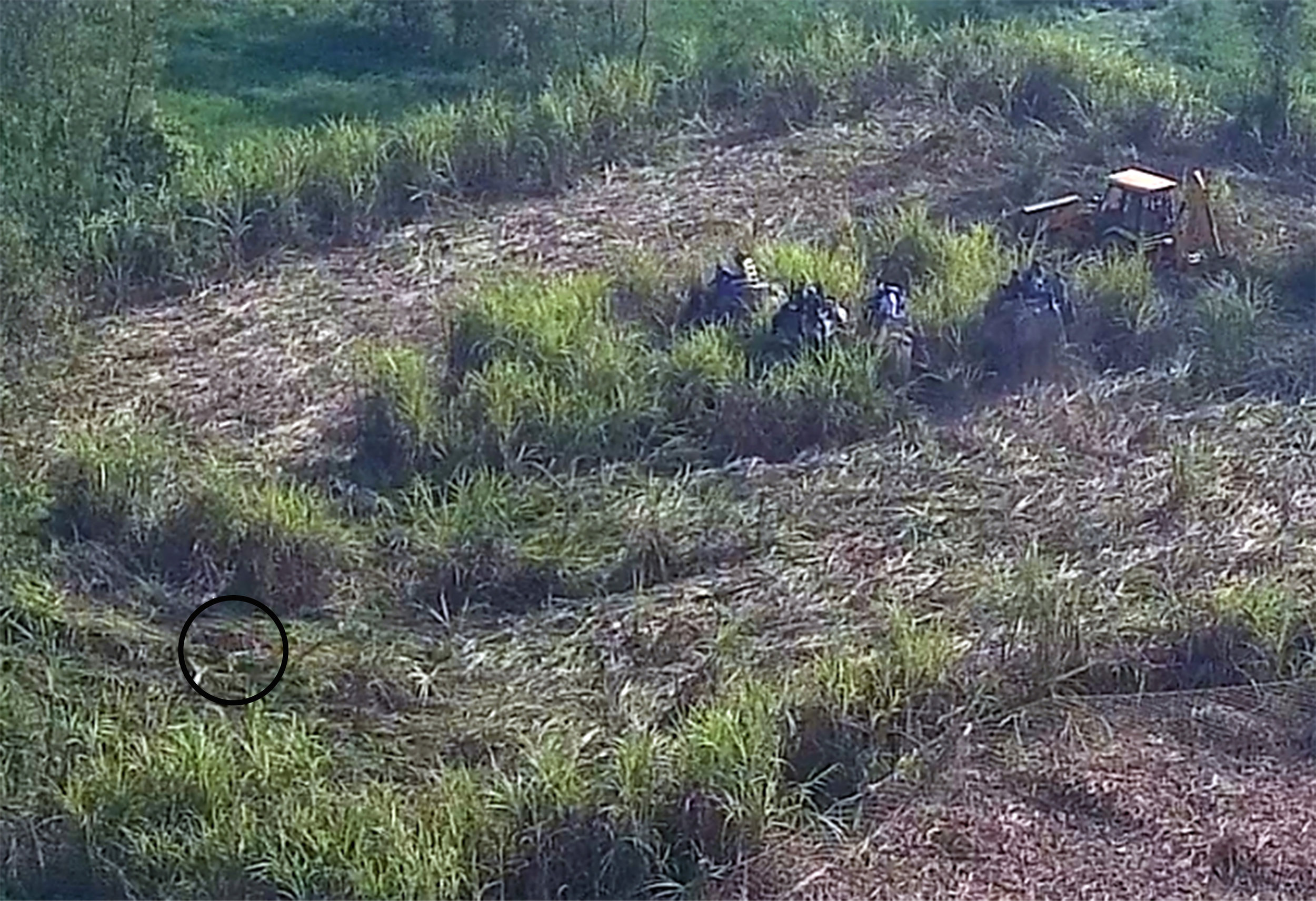


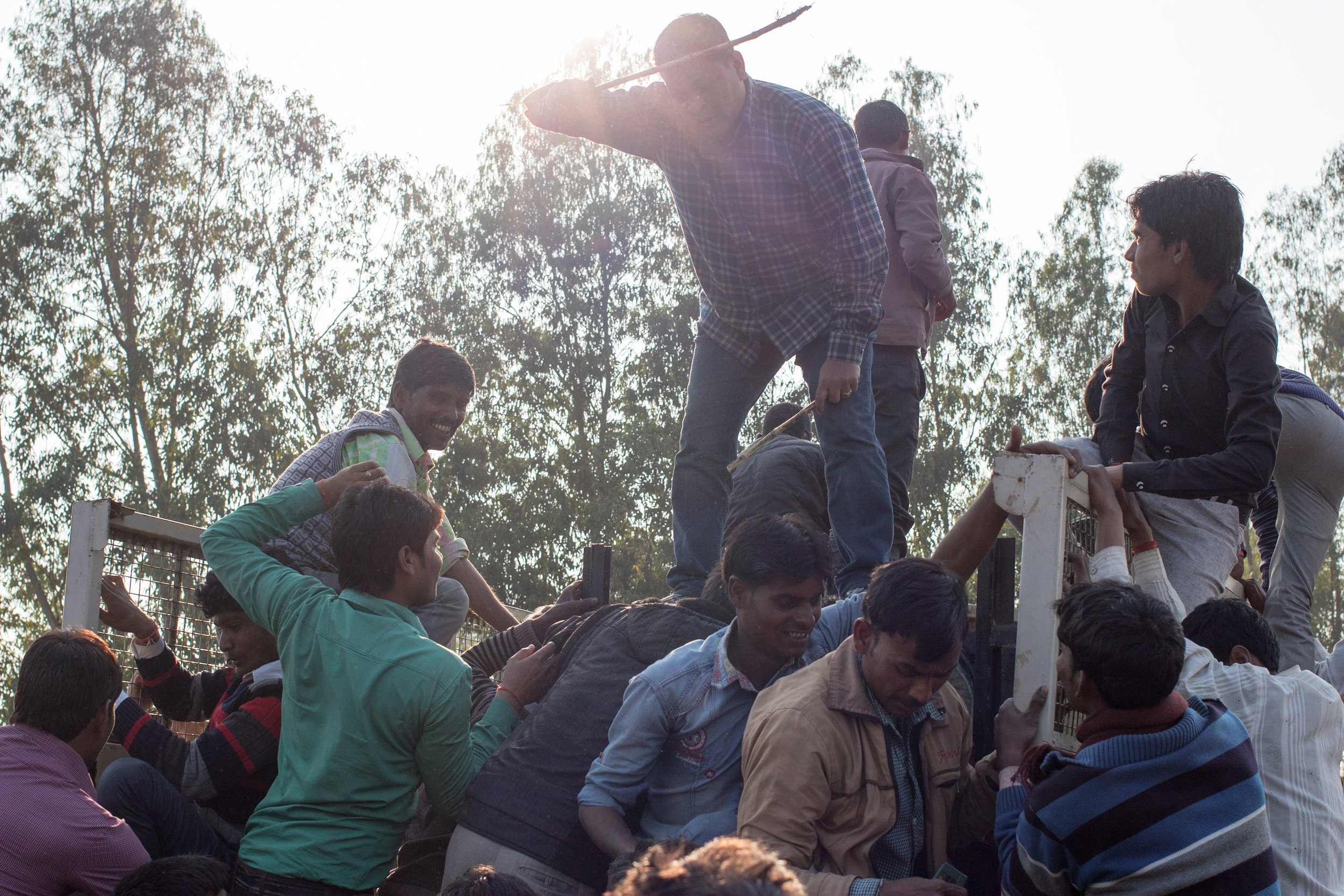

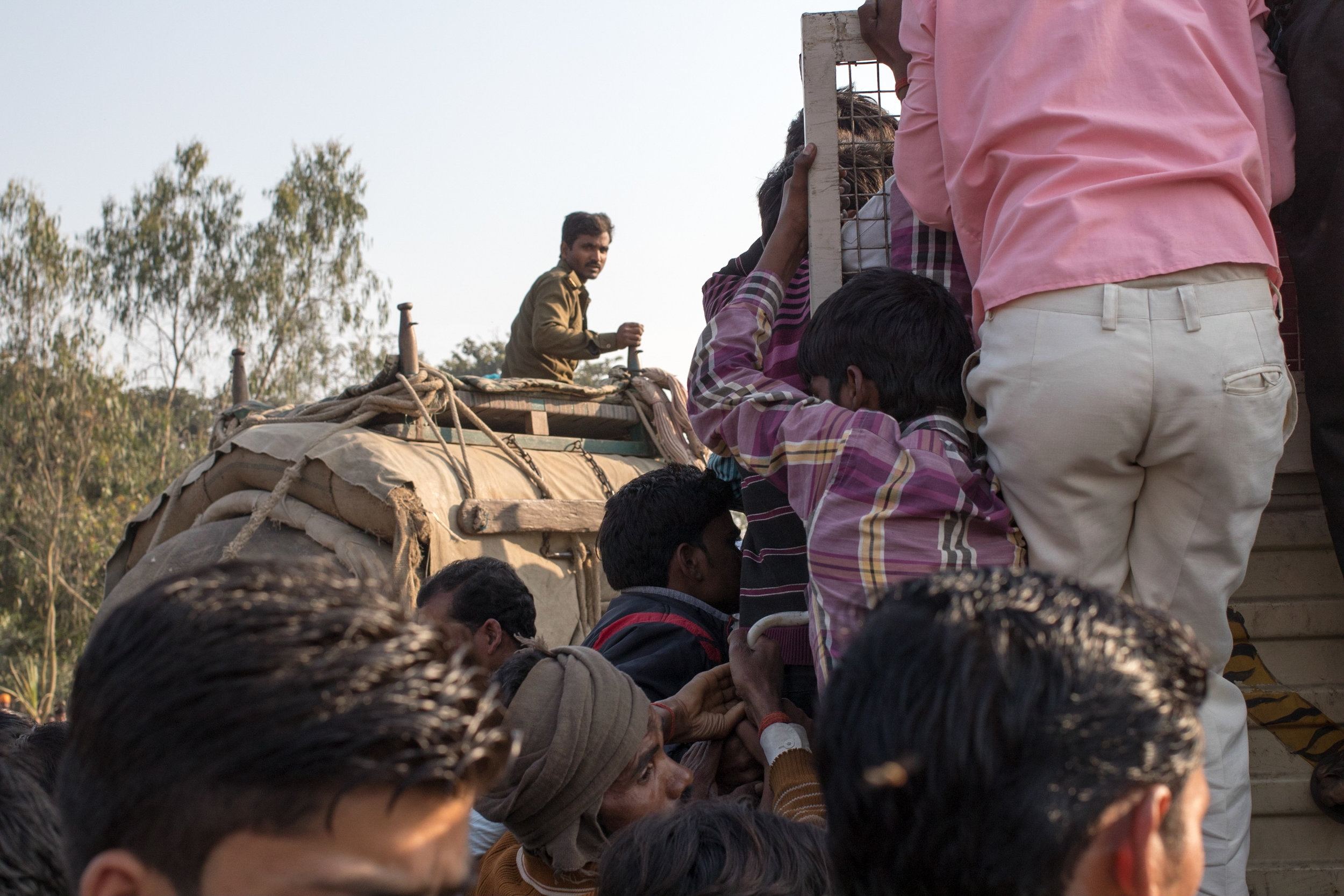
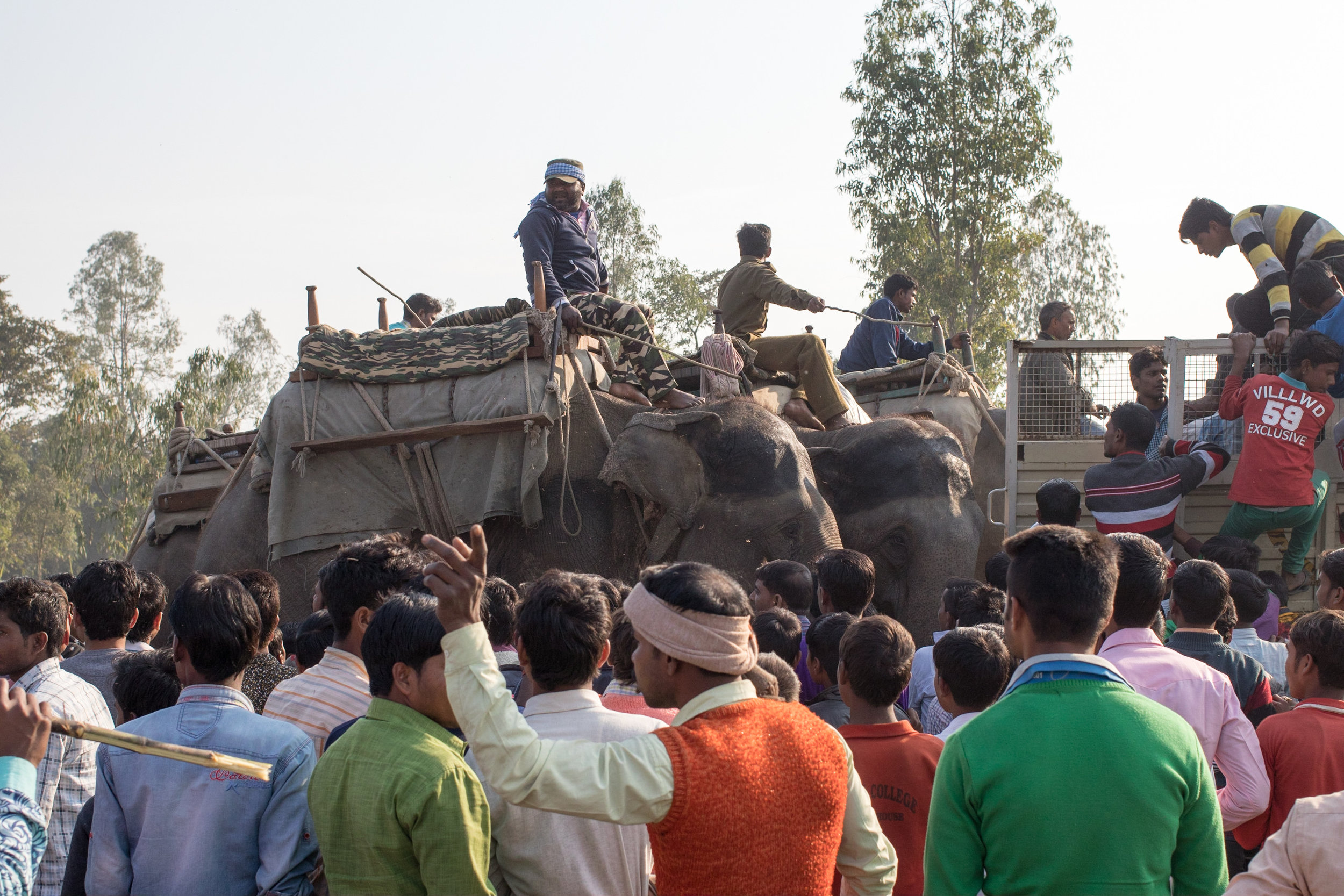
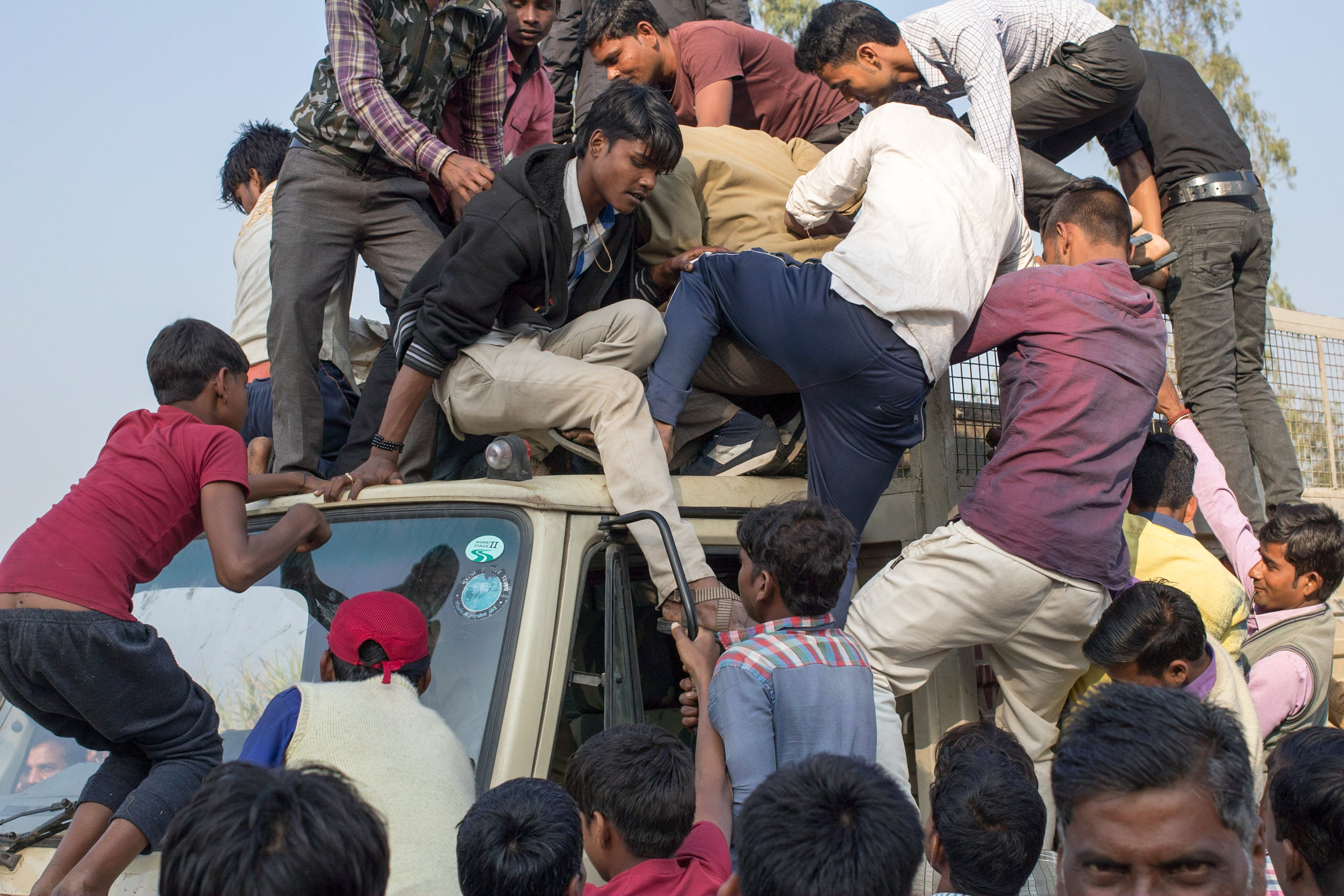

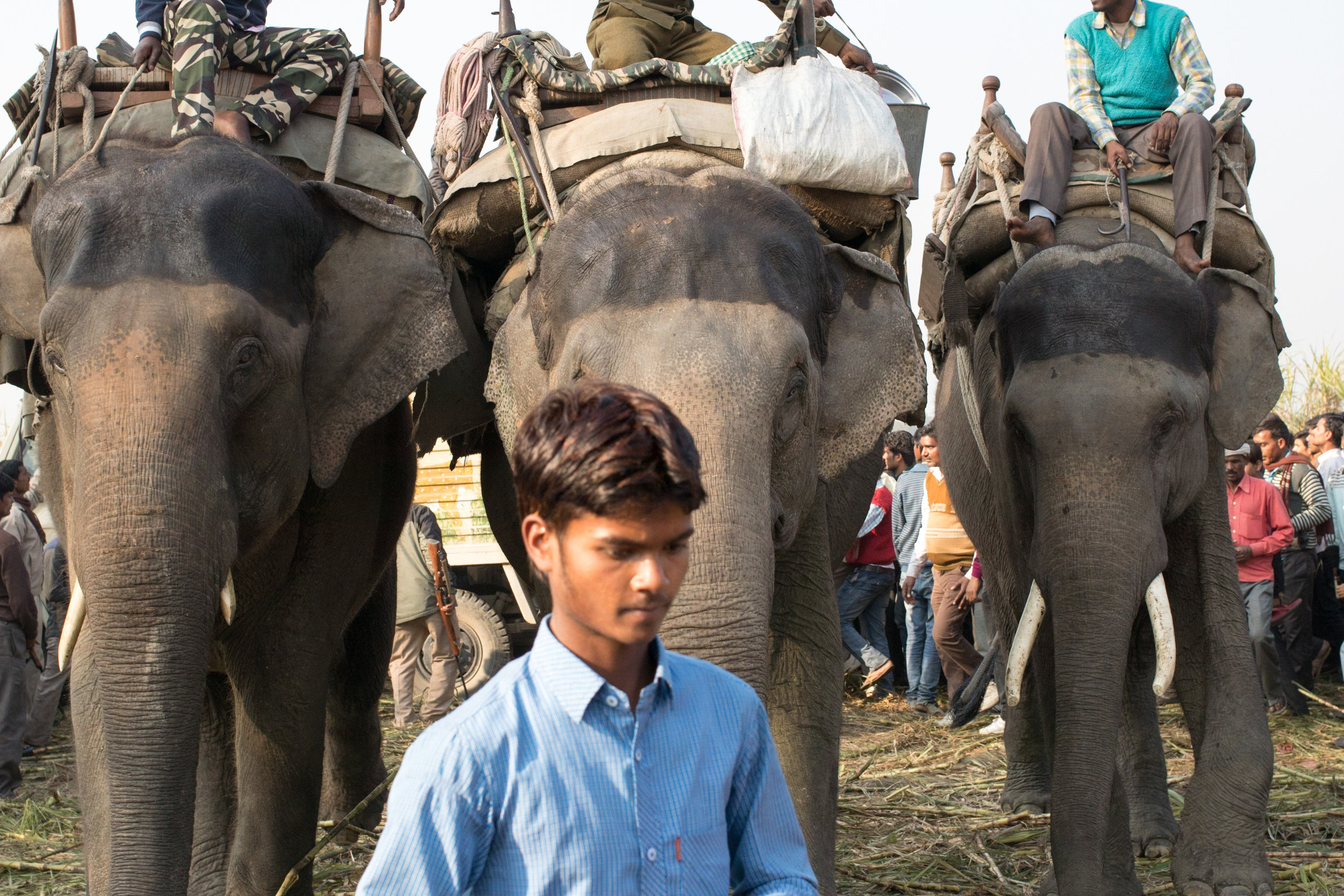
Drones are still a novelty in India; the Directorate General for Civil Aviation banned their use by civilians in October 2014 till further regulations were issued, which haven’t arrived till date. However, there are civilian companies who provide drone services, bypassing the regulatory ban through the use of waivers from the authorities, or by working directly for government agencies as was the case in this operation. I was tasked with coordinating between the drone team and the UPFD, and we arrived in Pilibhit on the afternoon of the 10th of February.
The tiger had been located in a sugarcane patch the previous evening, but had managed to give its hunters the slip. On the day we arrived, extensive search operations were on over a large area to locate the general whereabouts of the tiger. While waiting for information, we demonstrated the use of the drones to the UP Forest Department staff. Both were quadcopters, that is, drones with four rotors that are capable of taking off vertically and of hovering in mid-air like helicopters. One was the consumer-level DJI Phantom 4, while the other was the professional-level DJI Inspire - both are equipped with controllable cameras, and are commonly used for videography purposes. It turned out that the Forest Department also had a Phantom 4 of their own, which they’d brought down from Dudhwa Tiger Reserve. Our drone operators used the afternoon to conduct basic training, showing the UP Forest Department staff how to fly their drone safely and use it for surveillance.
Tiger capture operations can last anywhere from a few days to a few weeks, and often end inconclusively. So our initial plan was to spend at least three days in the area conducting drone operations. Subsequently, depending on how things played out, and how useful the drones were perceived to be, we’d either head back to Delhi or extend our stay in the area.
As it turned out, this tiger really was a man-eater; it made its third kill in 5 days in the early morning of the 11th of February. We reached the kill site, in a village to the west of Pilibhit, shortly after we heard the news and saw that a large crowd of people had gathered. One group of people surrounded the Forest Department staff who were interviewing the victim’s brother, while others surrounded local headmen who were giving interviews to the press. There was also a continuous flow of movement as people went to view the body of the last victim, which lay in a sugarcane patch nearby. On the ground, next to a pile of sand not far from the body, was a clearly defined pugmark.
Shortly after we got to the kill site, the Forest Department received information that fresh tiger pugmarks had been found about 2km north of the kill. All the action quickly re-centered itself; two trained Forest Department elephants were summoned and we headed out to that area to join the operation. We sent up the Phantom 4 to scan two large sugarcane patches where the tiger could potentially be hiding, with the camera pointing downwards. We weren’t really expecting to see anything through the dense greenery, and we didn’t. However, while there was a chance that we’d actually find something, these flights also served to keep the crowds that had gathered distracted and away from the elephants, which were searching some distance away.
Most people in India haven’t seen drones in action; I live in Delhi and work on drone policy issues, but even I’d only seen them used twice in India before this operation. While one does eventually get used to them, there’s something fascinating about watching these small robots take flight, and the local residents who’d come out in droves to watch the tiger being captured weren’t immune. The open-top safari jeep we were operating the drones out of was constantly surrounded by people, and it’s the closest I’ve ever been to feeling like a movie star. Since there were so many people in close proximity, we were launching the Phantom 4 off the hood of the vehicle but landing it by direct hand-capture, which is a very showy manoeuver. We did this for about 20 minutes, and then word came that the elephants had pinpointed the square plot of sugarcane the tiger was actually hiding in.
We headed there and kept the drones out of the air till they were called for, watching as the operation unfolded. Forest Department staff set up nets around the outer perimeter, guarded by the veterinarians and forest guards armed with tranquilizer, and regular, guns riding on elephant-back within the sugarcane patch itself. Shortly after the nets were put up, there was the sudden trumpeting of an elephant. We heard that the tiger had charged at one of them, and scratched it near its right eye and on its trunk. The operation then halted for a while as everyone waited for two more trained elephants, a bulldozer and a truck, carrying a cage, to arrive on site.
Once all the resources were in place, the bulldozer began spiraling inwards into the sugarcane patch, gradually removing the tiger’s cover while leaving a thin fence of sugarcane along the perimeter. We sent up the larger drone at this point, both to document the operation and to keep it ready in case the Forest Department staff wanted to try and use it to flush the tiger out of the sugarcane.
From our vantage point outside the sugarcane patch, we could see the top of the bulldozer as it slowly mowed down the sugarcane, followed by a view of the elephants, with their riders, moving placidly through the sugarcane patch. It could have been any other calm afternoon, but the peace was suddenly disrupted by a swift burst of confused action. We saw a sudden burst of motion from the elephants, and I heard trumpeting, a roar and two distinct gunshots. However, later review of the video footage from the drone made the sequence of events much clearer. The bulldozer had removed most of the sugarcane, leaving only a small central patch standing, and once it was done, the four elephants took a circuit of the central patch. At the point the action had begun, two of the elephants either sensed the tiger, or their riders spotted it. Either way, both elephants wheeled to the left and charged into the sugarcane patch, and the other two followed. All four flailed around in the sugarcane. A little distance away, there was movement in the underbrush, and then the tiger burst out into the circle cleared by the bulldozer, and then dashed back into cover in the sugarcane left standing along the perimeter.
As it turned out, the veterinarians had managed to shoot the tiger with at least one tranquilizer dart. The elephants and their riders were pulled back as everyone waited to make sure that the tranquilizers had taken effect. In the meanwhile, the tiger doubled back into the sugarcane patch and then passed out. Two of the elephants then went back in to the patch, and once the personnel on elephant-back confirmed that the tiger had been incapacitated, they called the truck with the cage in. They dismounted from the elephants, quickly carried the tiger to the truck, pushed it into the cage and locked it.
It’s at this point that the surrounding crowds stormed the site and climbed onto the truck, snatched the keys from its hapless driver and slashed its tires. Newspaper reports of the day claim that the ‘angry locals’ also tried to set it on fire, but I didn’t see any evidence of that. Also, while I’m sure that there was anger and resentment on the part of the local communities against the man-eating tiger, the Forest Department and the State Government, I don’t think that the crowd itself was angry. I’ve grown up in Kolkata when it was under Communist rule, and I’ve seen angry mobs on the streets. This, however, seemed to be a crowd composed primarily of young men who were torn between wanting to hurt the tiger, see the tiger or merely be a part of the giant party in progress. The abundance of freshly-bulldozed sugarcane proved to be attractive to the mob - while some of it was being gnawed upon by those on the fringes of the mob, a lot of it was thrown at the truck, at other people or into the air. The elephants with their mahouts were still on the field near the truck, being used to help control the crowd. When one of the airborne sugarcane sticks went very close to one of the elephants, its mahout glared at the section of people from where it had come, and that was the end of the sugarcane throwing.
The Forest Department staff behaved admirably; once it was clear that the crowd couldn’t actually get to the tiger within the cage and harm it, they pulled the elephants out to one side, and kept them facing away from the crowd. They’d sent for a tractor to pull the disabled truck with the cage away, and in the meantime let the crowd spend its passion and energy climbing all over the truck and the cage. It was only when the tractor arrived that the Forest Department staff, and some police who’d been deputised to help, set up a cordon around the truck and made a real effort to push the people off. The truck was then attached to the tractor by ropes, and towed away with its captive and unconscious inhabitant.
The removal of the tiger from the site marked the end of the operation. It was successfully captured alive and sent to the Lucknow zoo. The elephants, their mahouts and the drone operators were thanked for their service, and everyone went on their way. While the drone deployment provided a useful record, and a unique perspective on the events of the day, it was the tried and tested age-old technique of hunting tigers, using beaters (or in this case, a bulldozer) and riders on elephant-back, that resulted in a successful resolution to the story of one of the man-eaters of Pilibhit in 2017.
With thanks to Ayush, Shakti, Harshad, Mudit, Naresh and Jaspreet.

